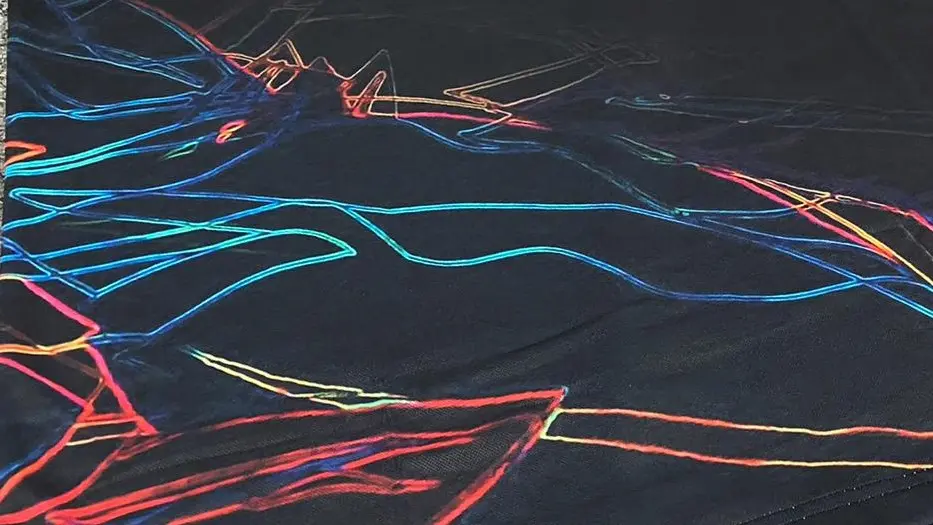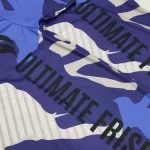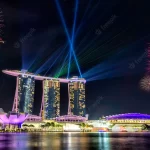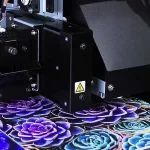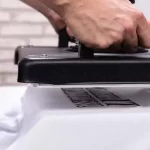Direct-To-Garment vs Silk Screen Printing
DTG (Direct-To-Garment) and Silkscreen printing are two of the most prevalent techniques used for printing personalised T-shirts and sportswear. Both approaches have advantages and disadvantages. This article from Teeser Singapore helps you understand the difference between DTG and Silkscreen printing.
Silkscreen printing is a more conventional process that includes pressing ink (plastisol or water based) onto the garments through a stencil (the screen), whereas DTG printing is a relatively newer method that involves applying ink directly to the garment using a digital printer (much like a home inkjet printer).
Direct-To-Garment (DTG) Printing Technique
DTG, sometimes known as ‘Digital Printing,’ is a relatively new technology in the apparel printing industry. Teeser Singapore provides DTG printing solutions for bespoke t-shirts and apparel in Singapore. DTG is similar to a home inkjet printer in terms of operation. The design is prepared on the computer (a PNG file is preferred), and the programme sends it to the DTG printer, where it is printed directly onto the garment using water based CMYK ink.
Teeser Singapore prepares white garments in the same way as a primer is applied before painting it. The CMYK ink is then immediately printed onto the prepared fabric. On coloured and black T-shirts, the procedure is more complicated.
The fabric of the garment is treated with a stronger pretreatment this time. The ‘white underbase’ is the next step, which entails applying white ink to all areas where the artwork will be displayed.
The white ink acts as a “canvas” for the colours to be printed on; otherwise, the colours on dark-colored shirts would be covered (since the waterbased inks are translucent, not fully opaque).
After the white underbase has been deposited, the garment is returned to the printer, and the CMYK design is printed on top of the white ink.
Visit our dirct to garment printing gallery, where you will view real-life examplkes of t shirts that were printed using the silkscreen method.
Silk Screen Printing Technique
Silkscreen printing is an old school method, but just because it’s old doesn’t mean it’s obsolete. Screen printing, on the other hand, is still the best printing method for large-scale orders and retail-quality custom garments.
Screen printing is the method of applying plastisol or water-based inks to cloth using a mesh stencil (the screen). Each colour in the design is produced using a separate screen.
This implies that your design must first be separated into layers based on colour, a process that begins with a skilled graphics team.
The resulting separation is printed on ‘films,’ similar to a photographic negative and then ‘burned’ onto mesh screens to form a stencil. Because of the time-consuming nature of the operation, screen printing is priced ‘per colour.’
The screens are then set up on a screen printing machine and a squeegee is used to force specific colours of ink through the stencil.
The garment passes through the press, obtaining a different colour each time, until all of the colours are placed on to make the finished pattern.
Visit our silk screen printing gallery, where you will view real-life examplkes of t shirts that were printed using the silkscreen method.
Pros of DTG Printing
- Full-colour printing is included at no extra charge.
- There are no order minimums.
- Ideal for photography prints or gradient-based designs.
- For modest runs, it’s cost-effective (1 to 50 units)
- Natural water-based pigments
Cons of DTG Printing
- Colours aren’t as opaque or solid as they are in screenprinting.
- It is possible that it will fade with time (10-20 percent for white T-shirts, 5-10 percent for coloured garments)
- When washing, it’s important to take extra precautions (cold, gentle wash only, no dryer)
- When compared to screenprinting, it is not as cost-effective for larger runs (designs with 1-5 colours)
- Only suitable for clothing made of 80-100 percent cotton. There is a limited product choice available.
- There are fewer printing locations available (no sleeve printing or printing near hems)
Pros of Silk Screen Printing
- Colours that are extremely opaque and solid
- Ink and prints that are thicker
- When properly cared for, the print will last the life of the garment.
- There are special inks available (metallic, gold, glow-in-the-dark)
- Larger runs (25+) are more cost-effective.
- Suitable for a larger variety of clothing (cotton, polyester, sports material, etc.)
- In comparison to DTG printing, there are more print spots available (sleeves, near hems, off-set, etc.).
Cons of Screen Printing
- The more colours you use in your design, the more money you’ll spend.
- A maximum of 5-6 solid colours should be used.
- ‘Full-process’ screen printing and halftones can be used to create gradients and full-colour prints.
- Minimum orders are required.
- More time-consuming. Depending on the amount of colours and intricacy of the task, the average manufacturing time ranges from 1-3 weeks.
Read part (1) of our DGT vs Silkscreen printing article.
The Teeser Singapore Recommendations
DTG printing is suggested for full-colour designs with a lot of details (such as graphics, gradients, pictures and so on) and/or orders in small quantities, such as a one-off design or a few pieces.
Teeser’s DTG printing is the best in the industry, with excellent colours and durability and is appropriate for a wide range of applications. Full-colour designs, such as images and graphics, are a DTG specialty.
Because of the thicker and more solid plastisol/water based inks available, silkscreen printing will provide the most bright, long-lasting prints. Because the screen printing procedure necessitates the setup of each colour in the design independently, it is more labour demanding and resource intensive.
The minimum order quantity is usually higher and depending on the garment, a maximum of 5-6 solid colours can be printed. We recommend screen printing for T-shirts and gear that will be worn and washed frequently.
It’s perfect for those looking for the highest colour reproduction and garment longevity, such as for corporate uniforms, sports teams, fashion retail and so on.
Contact us for information on additional types of t shir printing techniques such as heat transfer and dye sublimation.

